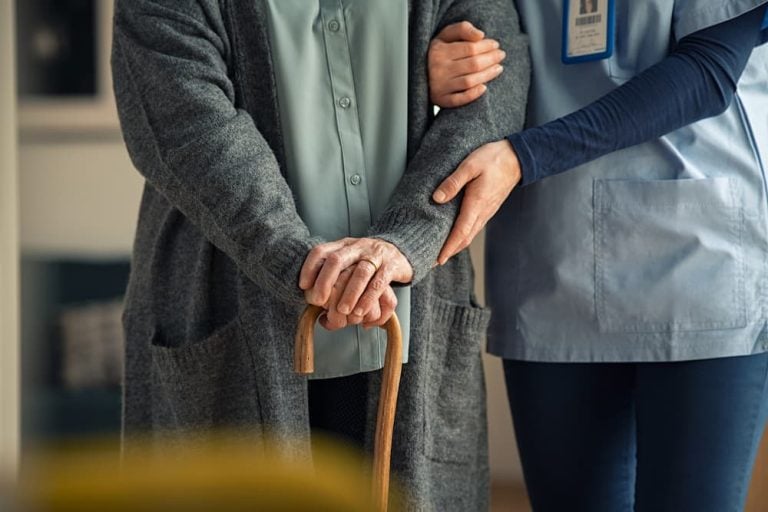Did you know that approximately 2 million seniors over the age of 65 have been mistreated, exploited, or neglected by a caregiver? Many of these cases occur in nursing homes and long-term care facilities, where elderly residents are often unprotected and vulnerable. Abuse and neglect can range from physical abuse to more subtle emotional abuse and early signs are not always easy to recognize at first.
What is Nursing Home Abuse?
When elderly residents of a nursing home suffer from negligence or intentional harm, this is considered nursing home abuse. A nursing home has a responsibility to their residents and families to ensure a safe environment that is free from abuse or harm. This includes performing substantial background checks on all staff members and caregivers, and instituting policies that encourage transparency in care. When they fail to do this, they can – and should – be held accountable for their negligence.
What is Elder Abuse?
Unlike nursing home abuse, however, elder abuse is not confined to nursing homes or long-term care facilities. As older adults age, they can become frail and may begin to lack the cognitive and physical abilities to care for themselves. This places them in an extreme state of vulnerability and can make them easy targets for abuse and neglect. Unfortunately, noticing elder abuse is not easy because many seniors fail to report their abuse to their loved ones. They may be afraid, don’t want to seem like they’re “complaining” or they may lack the cognitive or physical ability to report their abuse.
Where Can Elder Abuse Occur?
Elder abuse tends to take place where the senior lives, however, some forms of abuse are perpetrated out in public. Elder abuse can occur in home setting or even in a public place and abusers can be financial institutions, trusted friends, or even family members. Places where elder abuse most often occurs includes:
- Nursing homes
- Long-term care facilities
- Hospitals
- Senior’s home
- Friend’s house
- Family member’s house
- Assisted living facility
- Financial institution
- Shared public spaces
Types of Elder Abuse and Neglect
Family members who realize their loved one is being abused or neglected may experience a wide range of emotions, including guilt, grief, disbelief, and anger. They may blame themselves for choosing that facility or for not recognizing the signs of abuse sooner. Unfortunately, recognizing the signs of elder abuse and neglect isn’t always easy and can go undetected for a long time.
There are numerous types of elder abuse. In fact, there are 5 possible types of elder abuse, including:
Physical Abuse
The elderly are at an increased risk for being physically abused because they often lack the physical strength to defend themselves. By definition, physical elder abuse occurs anytime a caregiver uses physical force that results in bodily injury, pain, or impairment. Examples of physical abuse include:
- Improper use of restraints
- Burning senior
- Slapping, hitting, or punching elderly resident
- Kicking or shoving elderly resident
- Inappropriate use of drugs or sedatives
- Physical punishment
- Force feeding
Families whose loved ones are being physically abused may notice the following signs:
- Broken bones
- Bruising
- Bed sores
- Welts or lacerations
- Restraint marks
- Verbal reports of being abused
- Internal bleeding or injuries
- Sudden changes in elderly person’s mood or behavior
- Depression or anxiety about being left alone
Emotional Abuse
Recognizing emotional abuse can be difficult because the signs are often subtle. When an elderly resident is abused verbally or nonverbally, they can suffer devastating emotional distress, pain and anguish. Examples of emotional abuse include:
- Social isolation
- Verbally insulting and demeaning remarks
- Treating elderly resident like a child
- Humiliating the elder
- Intimidating the elder or making threats
- Ignoring the elderly person
Families whose loved ones are being emotionally abused may notice the following signs:
- Elder becoming increasingly unresponsive or withdrawn
- Signs of depression
- Signs of agitation and emotional turmoil
- Behavior that could mimic dementia
- Reports of verbal or emotional mistreatment
- Signs of increased anxiety
- Suicidal thoughts
Sexual Abuse
By definition, sexual elder abuse is any unwanted touching or non-consensual sexual act with an elderly person. If an elderly resident suffers from dementia or is incapacitated and cannot give consent, this is also a form of sexual abuse. Examples of sexual abuse can include:
- Unwanted touching of the genitals or buttocks
- Sexual assault
- Coerced nudity
- Sodomy
- Sexual intercourse
- Being forced to watch others perform sexual acts
- Being forced to perform sexual acts on others
- Taking pictures of nude elder
Families whose loved ones are being sexually abused may notice the following signs:
- Unexplained STDs
- Unexplained genital infections
- Bleeding from the anus or vagina
- Bruises on genitals or on breasts or buttocks
- Underwear that is bloody or stained or torn
- Reports of sexual abuse by the elder
Elder Neglect
As seniors age, they can become increasingly dependent on others for their mobility. They may be unable to care for themselves or get out of harm’s way. Caregivers have a responsibility to care for these patients and ensure that they have adequate nutrition, water, and sleep. Failure to do so may be considered neglect. Examples of neglect include:
- Withholding food
- Improper supervision
- Failure to perform daily hygiene
- Letting incapacitated person sit in urine or excrement
- Unsanitary living conditions
- Not performing daily activities with patients
- Withholding medication
Families whose loved ones are being neglected may notice the following signs of neglect:
- Untreated bed sores
- Unsanitary living conditions
- Reports of neglect from elderly patient
- Malnutrition
- Dehydration
- Sun burns
- Foul odor or smells
Financial Abuse
Financial abuse of an elder is extremely common. From institutions inappropriately drafting money to family members improperly using the elderly person’s assets, financial abuse can take many forms. Anytime a caregiver or institution takes money or property from an elder without consent or through fraud, this can be financial abuse. Examples of financial abuse include:
- Coercing elder to sign financial documents
- Improperly using power of attorney
- Stealing possessions or money
- Forging elder’s signature
- Taking cash from the elder
- Scamming elder into handing over money or property
Families whose loved ones are being financially abused may notice the following signs:
- Caregiver’s name suddenly appearing on bank cards or documents
- Changes to banking or estate
- Changes to legal documents
- Unexplained ATM purchases
- Unexplained money disappearing from accounts
- Unexplained transfer of assets

What is the Most Common form of Elder Abuse in Colorado?
The Colorado Bar Association has claimed that financial exploitation is the most common form of elder abuse in Colorado. This insidious behavior is prevalent because it leaves minimal evidence and can go unnoticed for years. Perpetrators often commit financial exploitation multiple times before getting caught.
Fortunately, the state of Colorado is aware of the financial exploitation of elders and has made it mandatory to report instances of abuse. Anyone who knows about elder abuse is obligated to report it as soon as possible. Those who fail to report abuse may face fines and other legal penalties.
Additionally, Colorado law allows victims to sue an abuser who commits financial exploitation. In many cases, care facilities can be sued when abuse occurs on their premises due to negligence.
We’re There When You Need Us
If you begin to suspect nursing home abuse or neglect, it is important to speak to an experienced Colorado nursing home abuse attorney quickly. Your attorney will be able to protect your loved one from further abuse and hold the negligent nursing home accountable. At McDivitt Law Firm, we have offices conveniently located throughout Greater Colorado. With offices in Downtown Colorado Springs, North Colorado Springs, Denver, Aurora, and Pueblo, our attorneys are ready to assist you in a moment’s notice.
Contact the McDivitt Law Firm nursing home neglect lawyers today at Colorado Springs 719-471-3700, Denver 303-426-4878, or Pueblo 719-542-3700. We offer free consultations, so you can better understand your rights and options. Call us today!


